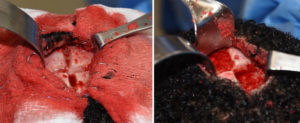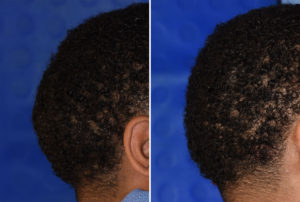Background: The shape of the back of the head is affected by many factors. While flatness and asymmetries are well known to be caused by intrauterine and postnatal head positioning, limiting growth expansions in the compressed area, the origins of bony protrusions are less clear. In a study published in the Journal of Craniofacial Surgery in 2013, occipital protrusions or ‘very round heads’ were seen in only 3% of men studied. Excessive flatness was far more common at over 15%.
Regardless of its percentage of occurrence to those affected a excessive roundness of the back of head is aesthetically bothersome. Such occipital protrusions can be reduced and the extent of its effect is based on the thickness of the bone. Specifically it is based on the thickness of the other table of the skull. This is the layer of skull bone that can be safely removed without undue bleeding or risking making the skull too thin.

Case Study: This young male was bothered by the protrusion that jutted out from teh back of his head. It was about the size of a hand in shape (my hand) and was located over the central or central-low occipital skull position.


Highlights:
1) Occipital skull protrusions can be reduced twosome degree based on the thickness of the skull bone.
2) The skull reduction of the back of the head is approached through a horizontal wavy scalp incision of around 9 cms.
3) A grid reduction technique is used to remove the outer cortical layer of the skull.
Dr. Barry Eppley
Indianapolis, Indiana


